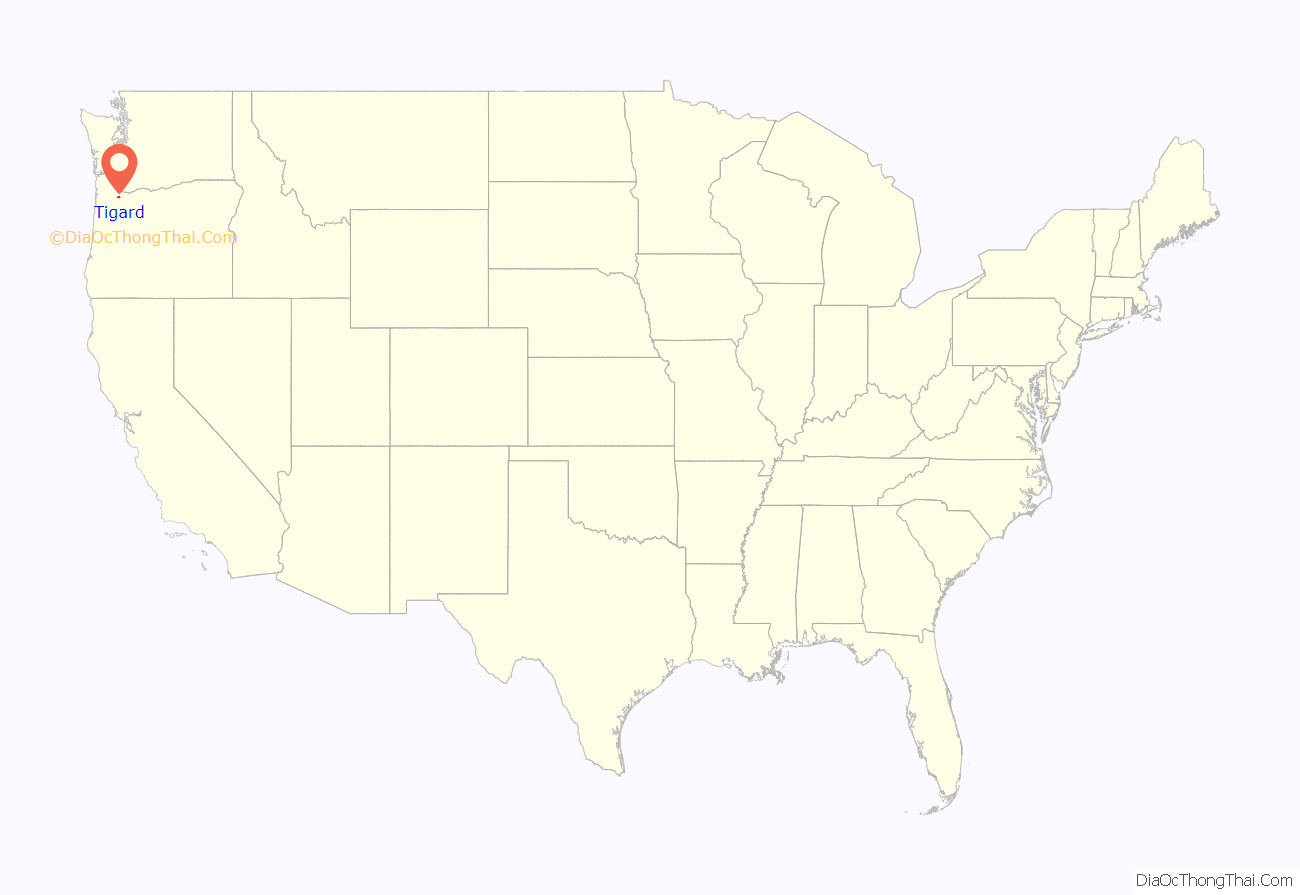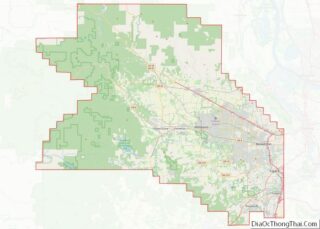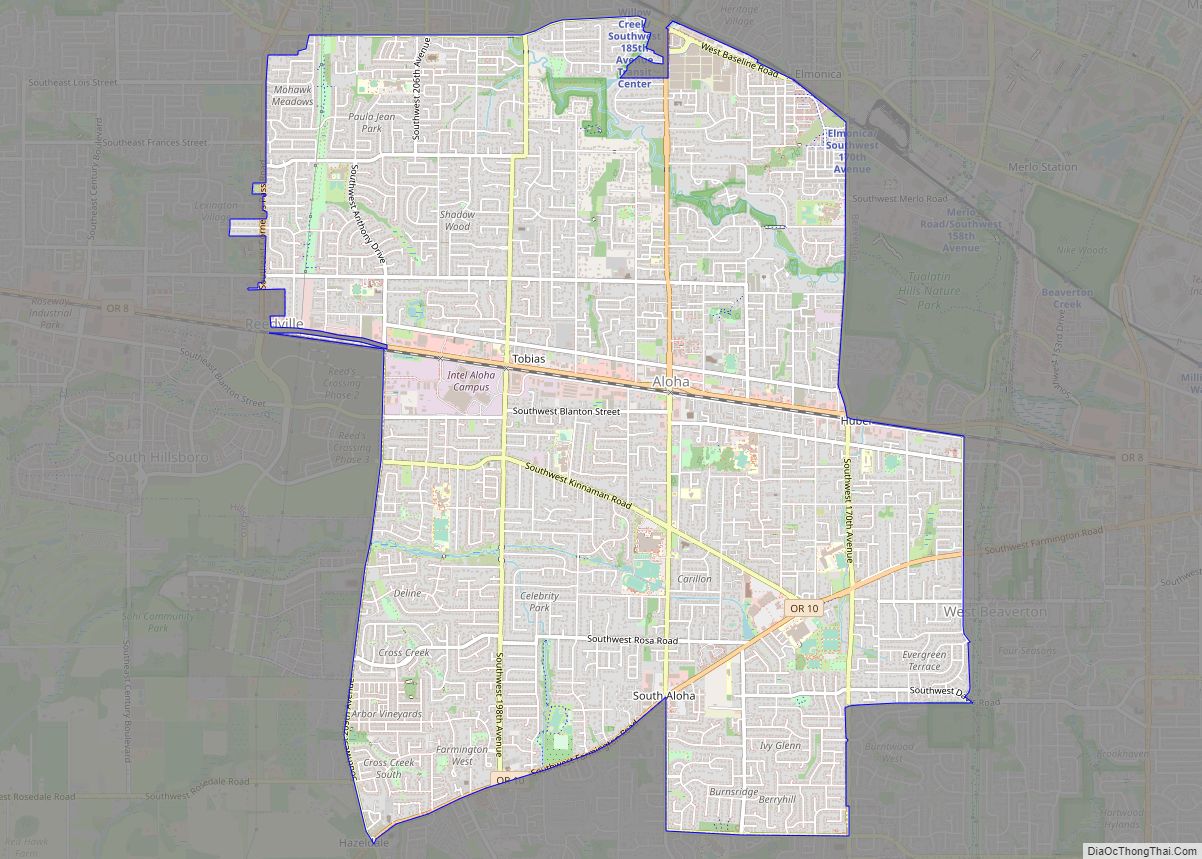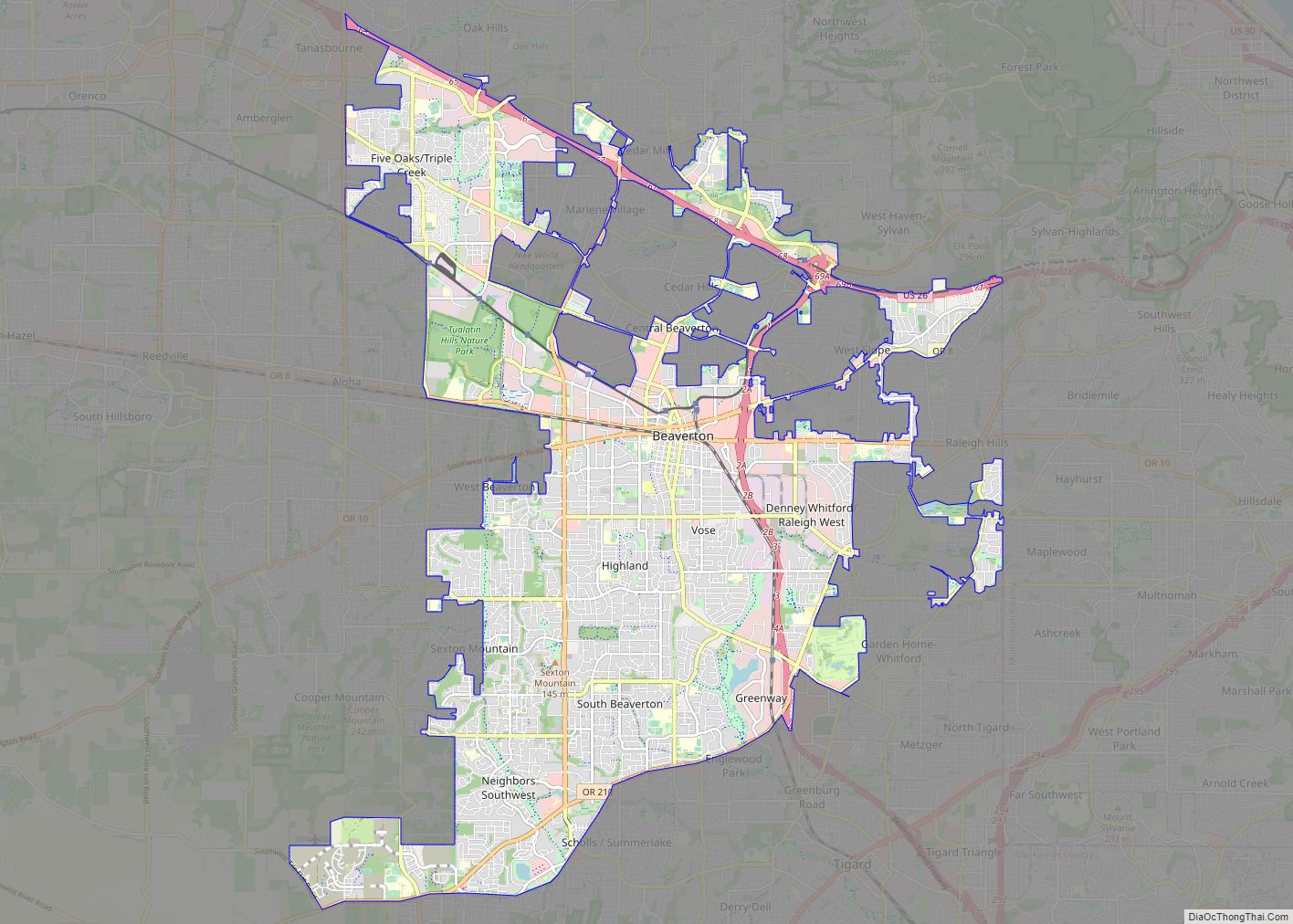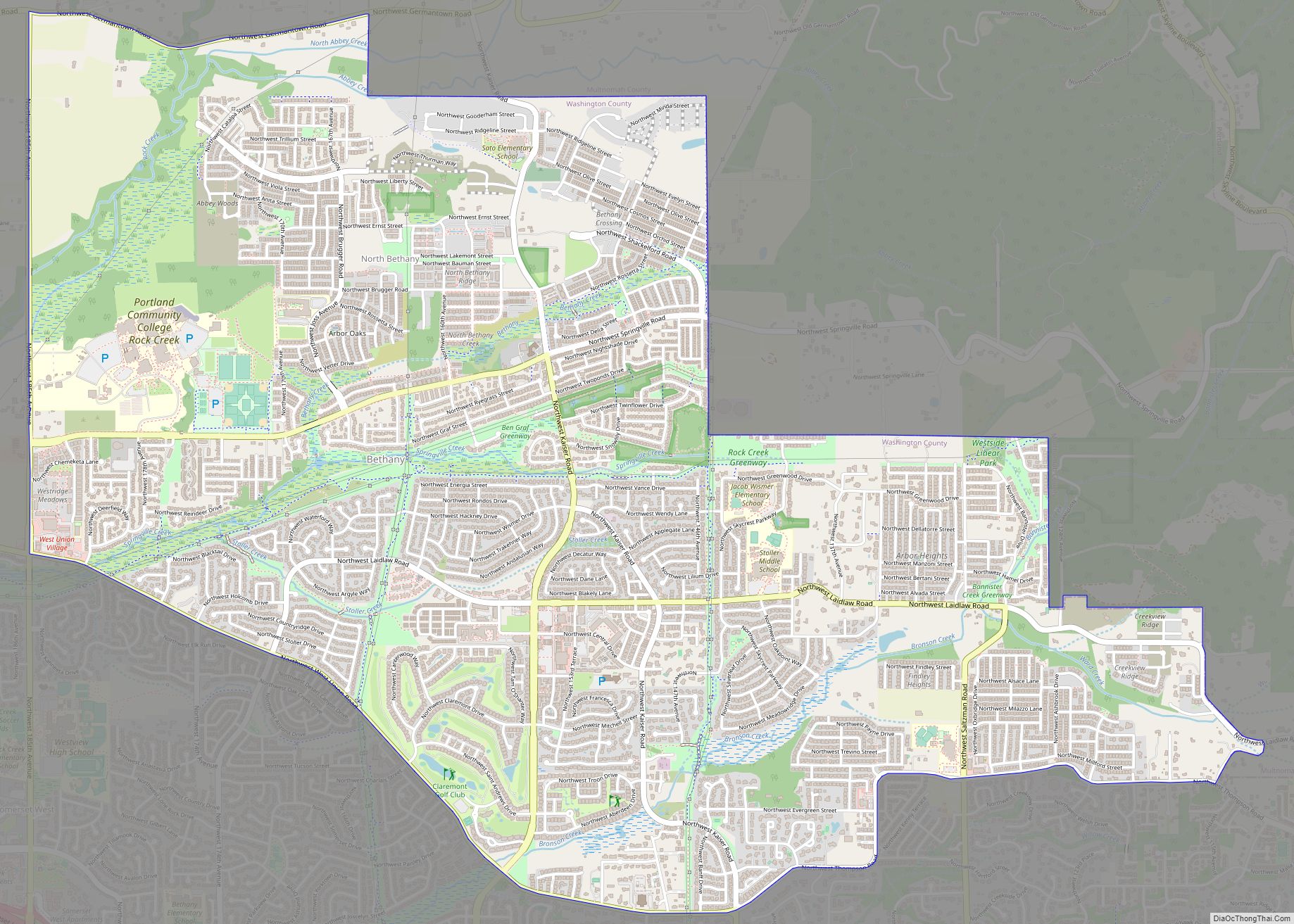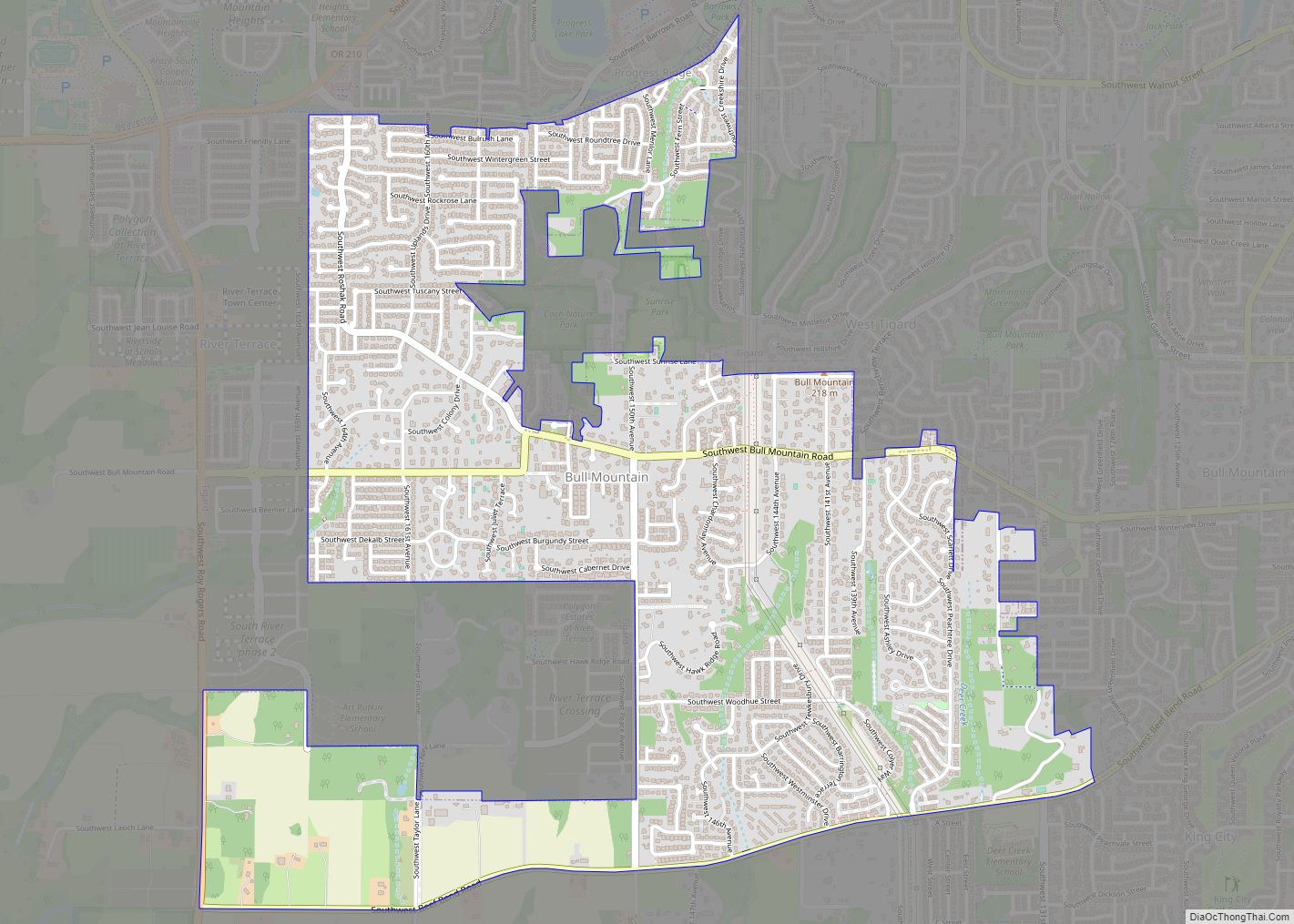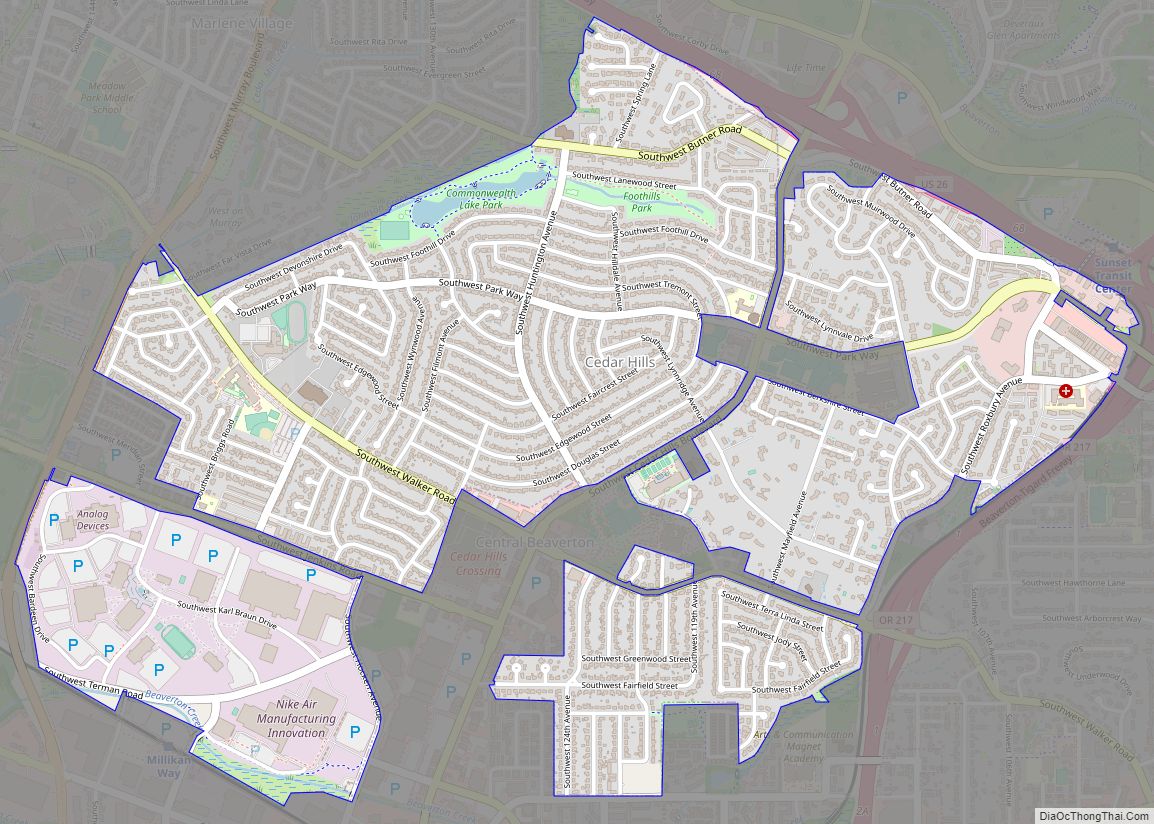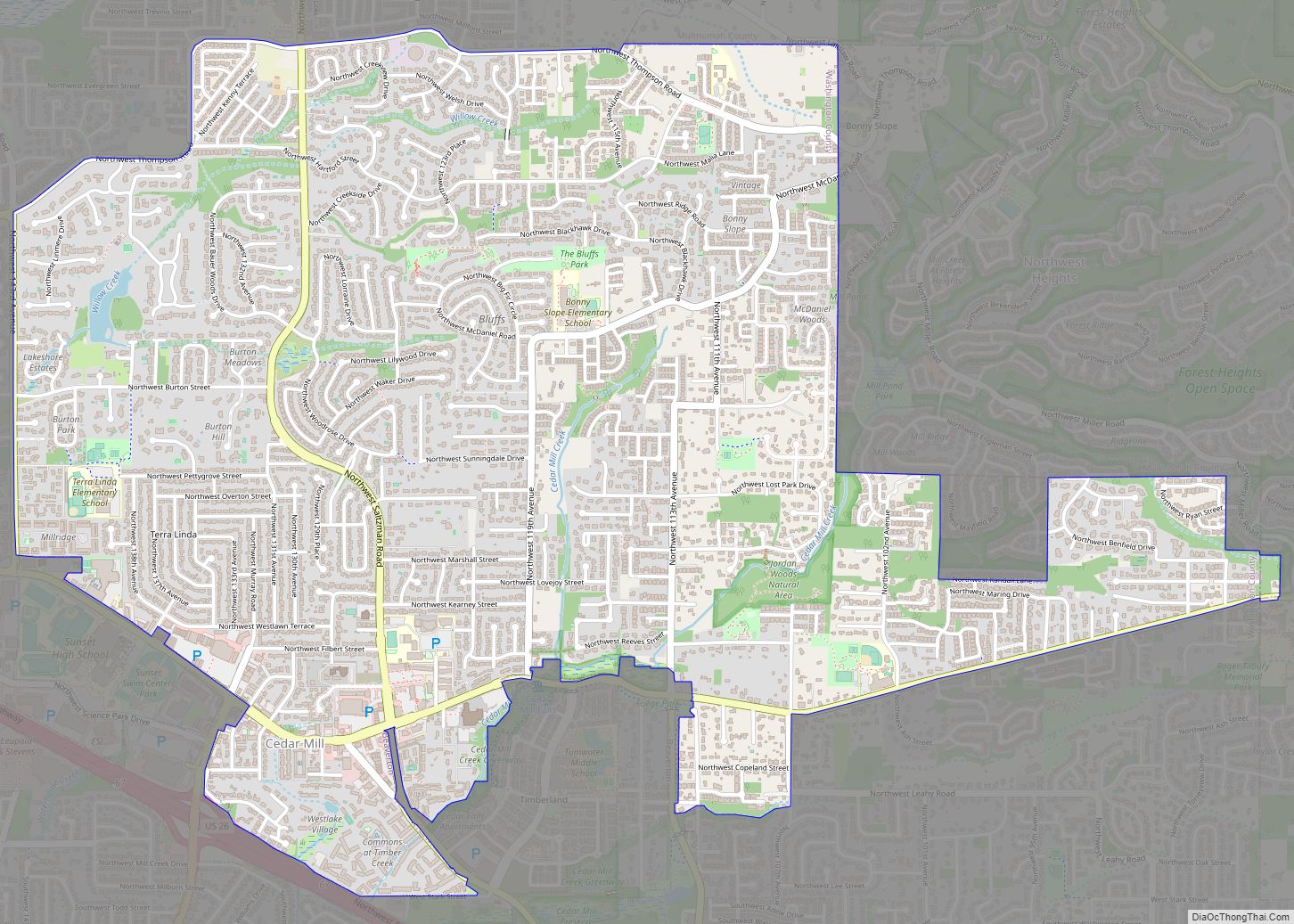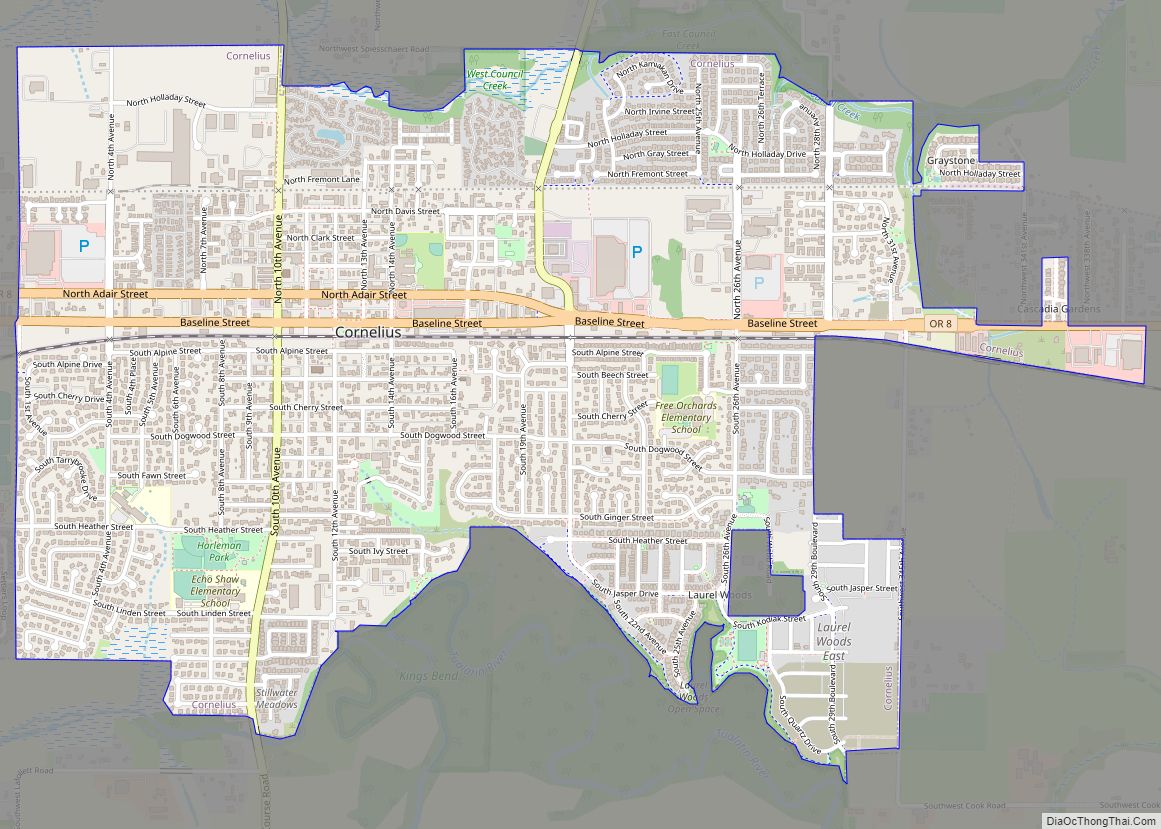Tigard (/ˈtaɪɡərd/ TY-gərd) is a city in Washington County, Oregon, United States. The population was 54,539 at the 2020 census. As of 2007, Tigard was the state’s 12th largest city. Incorporated in 1961, the city is located south of Beaverton and north of Tualatin, and is part of the Portland metropolitan area. Interstate 5 and Oregon Route 217 are the main freeways in the city, with Oregon Route 99W and Oregon Route 210 serving as other major highways. Public transit service is provided by TriMet, via several bus routes and the WES Commuter Rail line.
| Name: | Tigard city |
|---|---|
| LSAD Code: | 25 |
| LSAD Description: | city (suffix) |
| State: | Oregon |
| County: | Washington County |
| Incorporated: | 1961 |
| Elevation: | 300 ft (91 m) |
| Total Area: | 12.76 sq mi (33.04 km²) |
| Land Area: | 12.76 sq mi (33.03 km²) |
| Water Area: | 0.00 sq mi (0.01 km²) |
| Total Population: | 54,539 |
| Population Density: | 4,275.89/sq mi (1,650.99/km²) |
| ZIP code: | 97223, 97224, 97281 |
| Area code: | 503 and 971 |
| FIPS code: | 4173650 |
| GNISfeature ID: | 1128092 |
Online Interactive Map
Click on ![]() to view map in "full screen" mode.
to view map in "full screen" mode.
Tigard location map. Where is Tigard city?
History
Before colonization by European settlers, the Atfalati inhabited the Tualatin Valley in several hunter-gatherer villages including Chachimahiyuk (“Place of aromatic herbs”), near present-day Tigard. Primary food stuffs included deer, camas root, fish, berries, elk, and various nuts. To encourage the growth of the camas plant and maintain a habitat beneficial to deer and elk, the group regularly burned the valley floor to discourage the growth of forests, a common practice among the Kalapuya. The Atfalati spoke the Tualatin-Yamhill (Northern Kalapuya) language, which was one of the three Kalapuyan languages. Prior to contact with white explorers, traders, and missionaries, the Kalapuya population is believed to have numbered as many as 15,000 people.
Euro-Americans began arriving in the Atfalati’s homeland in the early 19th century, and settlers in the 1840s. As with the other Kalapuyan peoples, the arrival of Euro-Americans led to dramatic social disruptions. By the 1830s, diseases had decimated the Atfalati. The tribe had already experienced population decreased from smallpox epidemics in 1782 and 1783. It is estimated that the band was reduced to a population of around 600 in 1842, and had shrunk to only 60 in 1848. These upheavals diminished the Atfalati’s ability to challenge white encroachment.
Under the terms of a treaty of April 19, 1851, the Atfalatis ceded their lands in return for a small reservation at Wapato Lake as well as “money, clothing, blankets, tools, a few rifles, and a horse for each of their headmen–Kaicut, La Medicine, and Knolah.” At the time of the treaty, there were 65 Atfalatis. The treaty resulted in the loss of much of the Atfalati’s lands, but was preferable to removal east of the Cascade Mountains, which the government initially had demanded. This treaty, however, was never ratified. Under continuing pressure, the government and Kalapuya renegotiated a treaty with Oregon Superintendent of Indian Affairs Joel Palmer. This treaty, the Treaty with the Kalapuya, etc. (also known as the Willamette Valley Treaty or Dayton Treaty) was signed January 4, 1855 and ratified by Congress, on March 3, 1855 (10 Stat. 1143). Under the terms of the treaty, the indigenous peoples of the Willamette Valley agreed to remove to a reservation later designated by the federal government as the Grand Ronde reservation in the western part of the Willamette Valley at the foothills of the Oregon Coast Range, sixty miles south of their original homeland.
The Donation Land Claim Act of 1850 promoted homestead settlement in the Oregon territory and encouraged thousands of white settlers to come to the area. Like many towns in the Willamette Valley, Tigard was settled by several families. The most noteworthy was the Tigard family, headed by Wilson M. Tigard. Arriving in the area known as “East Butte” in 1852, the family settled and became involved in organizing and building the East Butte School, a general store (which, starting in 1886, also housed the area’s post office) and a meeting hall, and renamed East Butte to “Tigardville” in 1886. The Evangelical organization built the Emanuel Evangelical Church at the foot of Bull Mountain, south of the Tigard store in 1886. A blacksmith shop was opened in the 1890s by John Gaarde across from the Tigard Store, and in 1896 a new E. Butte school was opened to handle the growth the community was experiencing from an incoming wave of German settlers.
The period between 1907 and 1910 marked a rapid acceleration in growth as Main Street blossomed with the construction of several new commercial buildings, Germania Hall (a two-story building featuring a restaurant, grocery store, dance hall, and rooms to rent), a shop/post office, and a livery stable. Limited telephone service began in 1908.
In 1910, the arrival of the Oregon Electric Railway triggered the development of Main Street and pushed Tigardville from being merely a small farming community into a period of growth which would lead to its incorporation as a city in 1961. The town was renamed Tigard in 1907 by the railroad to greater distinguish it from the nearby Wilsonville, and the focus of the town reoriented northeast towards the new rail stop as growth accelerated.
1911 marked the introduction of electricity, as the Tualatin Valley Electric company joined Tigard to a service grid with Sherwood and Tualatin. William Ariss built a blacksmith shop on Main Street in 1912 that eventually evolved into a modern service station. In the 1930s the streets and walks of Main Street were finally paved, and another school established to accommodate growth.
The city was the respondent in (and eventual loser of) the landmark property rights case, Dolan v. City of Tigard, decided by the Supreme Court of the United States in 1994. The case established the “rough proportionality” test that is now applied throughout the United States when a local government evaluates a land use application and determines the exactions to require of the recipient of a land use approval.
In the 2004 general elections, the city of Tigard won approval from its voters to annex the unincorporated suburbs on Bull Mountain, a hill to the west of Tigard. However, residents in that area have rejected annexation and are currently fighting in court various moves by the city.
Tigard Road Map
Tigard city Satellite Map
Geography
According to the United States Census Bureau, the city has a total area of 11.69 square miles (30.28 km), all land.
See also
Map of Oregon State and its subdivision: Map of other states:- Alabama
- Alaska
- Arizona
- Arkansas
- California
- Colorado
- Connecticut
- Delaware
- District of Columbia
- Florida
- Georgia
- Hawaii
- Idaho
- Illinois
- Indiana
- Iowa
- Kansas
- Kentucky
- Louisiana
- Maine
- Maryland
- Massachusetts
- Michigan
- Minnesota
- Mississippi
- Missouri
- Montana
- Nebraska
- Nevada
- New Hampshire
- New Jersey
- New Mexico
- New York
- North Carolina
- North Dakota
- Ohio
- Oklahoma
- Oregon
- Pennsylvania
- Rhode Island
- South Carolina
- South Dakota
- Tennessee
- Texas
- Utah
- Vermont
- Virginia
- Washington
- West Virginia
- Wisconsin
- Wyoming
